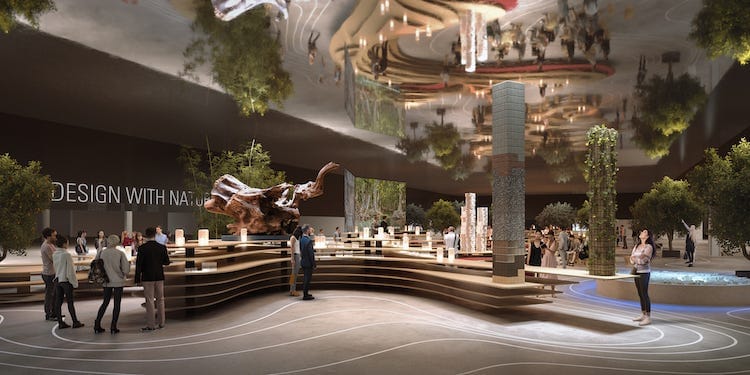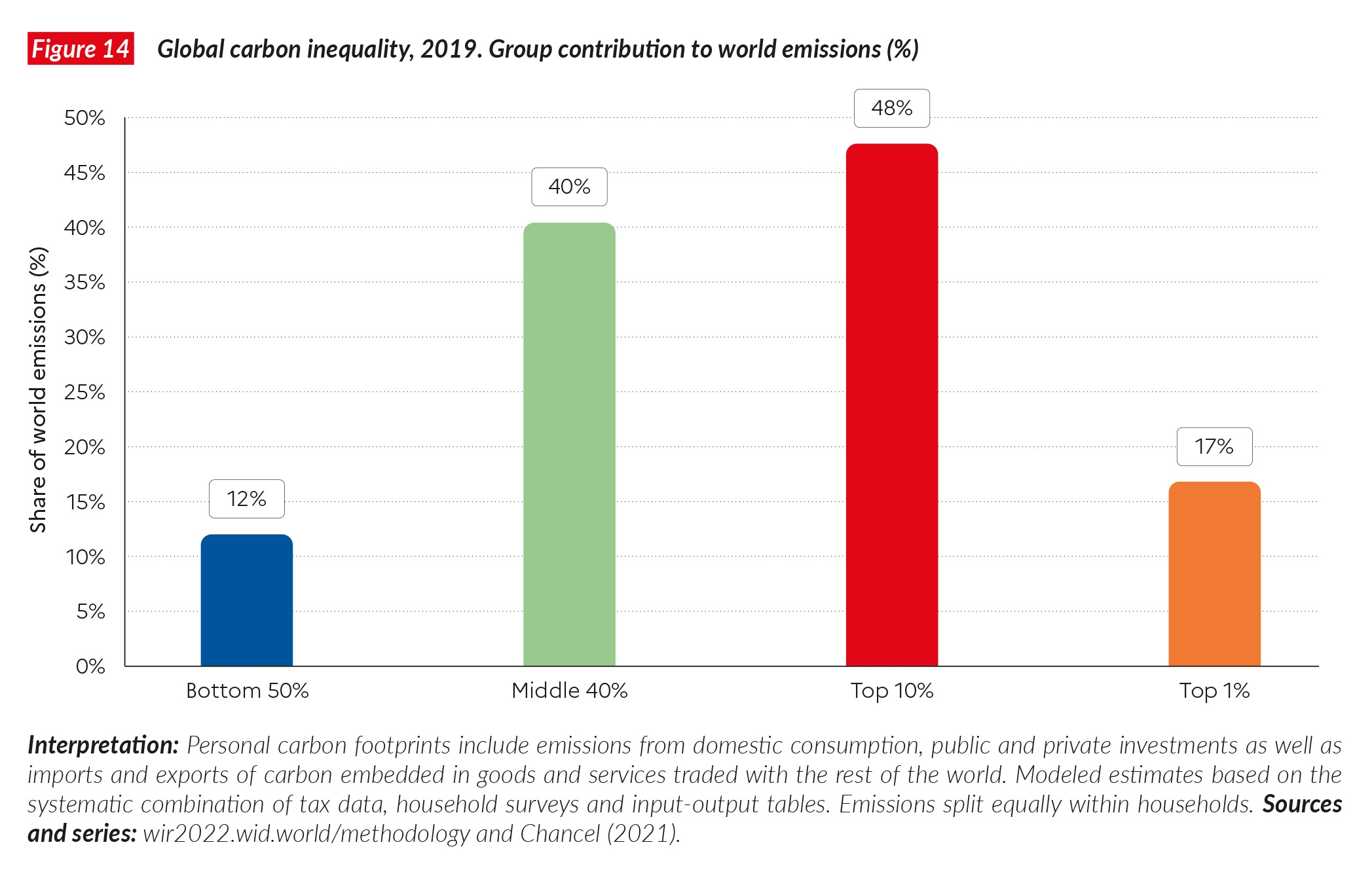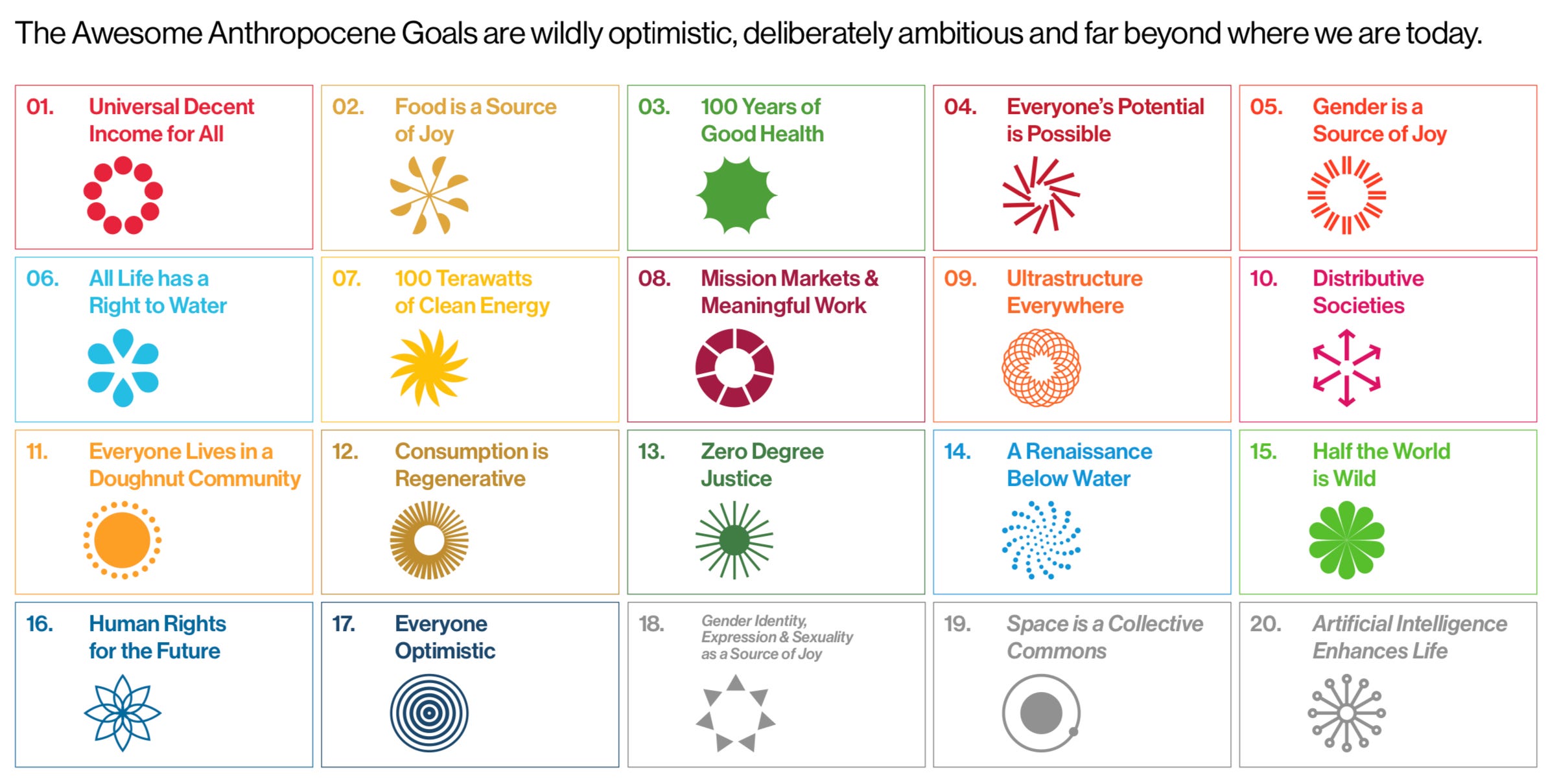
This year’s Salone Del Mobile in Milan will focus on sustainability, its organisers promise. According to Design Week, the show will use reusable or upcycled, low-environmental-impact, and FSC- or PEFC-certified materials for communal spaces. One of the major installations will be “Mario Cucinella’s Design with Nature [above], which explores the themes of circular economy, reuse and participatory architecture. The installation, made with materials derived from natural supply chains and from upcycled and recycled waste products, will span a 1,400 sq m space filled with corners for participants to interact with each other or be alone among various elements of greenery,” Design Week reports. More here

Rather than concentrating on disparities between nation states, “climate progress means first curbing the carbon output of the wealthier among us” according to new analysis from the World Inequality Lab, as reported by Bloomberg Green. Differences between high and low emitters within countries contribute more to global carbon inequality than differences between rich and poor nations, says the WIL, which is led by the Paris School of Economics and University of California at Berkeley. Their “research shows that, for example, to even out carbon footprints in the US, its top emitters would have to cut pollution by 87% by 2030 while the bottom half could actually increase theirs by 3%.” Read the full story here

“We’re asking for the benefit of your doubt and the gift of your imagination,” say Futerra introducing their Awesome Anthropocene Goals. The Goals take an optimistic look into the future, imagining that the Sustainable Development Goals for 2030 have been met and asking, what now? "The Awesome Anthropocene goals aren’t utopian imaginings or wishful thinking that the problems would go away,” Futerra say. “They are a first attempt to say what’s next, what should we hope to gain rather than just avoid.” Read the full report here
The Great GreenWashing Machine Part 2: Eco Age follows up its earlier report on greenwashing in fashion with further analysis suggesting that “even the environmental impact of fashion is not being correctly assessed, neither broadly, nor narrowly. Current assessments are broadly incorrect for two reasons. Firstly, because measurement is cradle to gate rather than cradle to grave so the harmful outcomes in some garments’ use and disposal are ignored. And secondly, because impacts are calculated per kilo, when what really matters – what is key – is impact per wear.” Full report here

